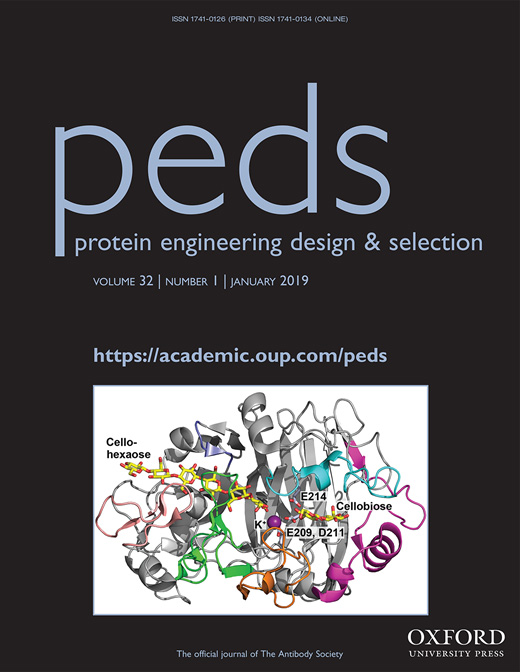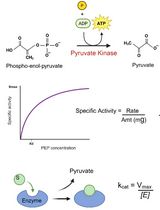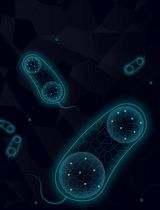- EN - English
- CN - 中文
A Method for User-defined Mutagenesis by Integrating Oligo Pool Synthesis Technology with Nicking Mutagenesis
一种集成引物池合成技术和切口诱变的用户自定义突变方法
发布: 2020年08月05日第10卷第15期 DOI: 10.21769/BioProtoc.3697 浏览次数: 6941
评审: Renuka KudvaNicole R. BuanMichael T Veling

相关实验方案

重组人线粒体RNA聚合酶(POLRMT)及启动因子TFAM和TFB2M的表达和纯化
An H. Hsieh [...] Tatiana V. Mishanina
2023年12月05日 2422 阅读
Abstract
Saturation mutagenesis is a fundamental enabling technology for protein engineering and epitope mapping. Nicking mutagenesis (NM) allows the user to rapidly construct libraries of all possible single mutations in a target protein sequence from plasmid DNA in a one-pot procedure. Briefly, one strand of the plasmid DNA is degraded using a nicking restriction endonuclease and exonuclease treatment. Mutagenic primers encoding the desired mutations are annealed to the resulting circular single-stranded DNA, extended with high-fidelity polymerase, and ligated into covalently closed circular DNA by Taq DNA ligase. The heteroduplex DNA is resolved by selective degradation of the template strand. The complementary strand is synthesized and ligated, resulting in a library of mutated covalently closed circular plasmids. It was later shown that because very little primer is used in the procedure, resuspended oligo pools, which normally require amplification before use, can be used directly in the mutagenesis procedure. Because oligo pools can contain tens of thousands of unique oligos, this enables the construction of libraries of tens of thousands of user-defined mutations in a single-pot mutagenesis reaction, which significantly improves the utility of NM as described below.
Use of oligo pools afford an economically advantageous approach to mutagenic experiments. First, oligo pool synthesis is much less expensive per nucleotide synthesized than conventional synthesis. Second, a mixed pool may be generated and used for mutagenesis of multiple different genes. To use the same oligo-pool for mutagenesis of a variety of genes, the user must only quantify the fraction of the oligo-pool specific to her mutagenic experiment and adjust the volume and effective concentration of the oligo-pool for use in nicking mutagenesis.
Background
Evaluation of the sequence dependence of protein function is of tremendous importance for applied and fundamental protein science. In recent years, deep mutational scanning (DMS) has risen to the forefront of protein-based research (Fowler and Fields, 2014). DMS experiments allow for the elucidation of genotype-phenotype relationships and the generation of biomolecular fitness landscapes using large numbers of protein variants assessed using deep sequencing. DMS has been employed for protein engineering (Romero et al., 2015), epitope mapping (Van Blarcom et al., 2015; Kowalsky et al., 2015a), and evolutionary biology (Doud et al., 2017; Faber et al., 2019). The key to DMS is correlating the abundance of cells expressing a particular protein variant to a particular property of that variant. If this can be done then quantitative deep sequencing can measure the property for tens of thousands of protein variants in an in vivo library. The generation of libraries containing large numbers of programmed variants is thus essential to obtaining high quality data from a DMS experiment. Often, a saturation mutagenesis library containing all possible single mutations is the desired starting point.
Methods for saturation mutagenesis have continued to improve over time, starting with uracil-dependent Kunkel and Pfunkel Mutagenesis (Kunkel, 1985; Firnberg and Ostermeier, 2012). More recently, the development of nicking mutagenesis by Wrenbeck et al. (2016), which employs complementary nicking restriction endonucleases has improved on Kunkel and Pfunkel in time and convenience. At the same time, oligonucleotide pool technology, which yields tens of thousands of specifically designed oligos in one pot, has rapidly advanced. Oligo-pools afford practical and economical benefits to the original NM protocol, permitting many more mutations to be designed at lower cost (Medina-Cucurella et al., 2019). The combination of nicking mutagenesis with oligo pool-derived primers may benefit any research where many amino acid substitutions are desired at one or many sites in a target protein, and specifically in directed evolution studies applicable to protein design and evolutionary biology. As an example, this protocol was recently used to program nearly all single point mutants in critical genes in viruses (Faber et al., 2020).
Materials and Reagents
- 245 mm Square BioAssay Dishes (Corning®, catalog number: 431111 )
- PCR Tubes (e.g., VWR, catalog number: 52509-304 )
- Glass Pasteur pipette
- Scraper
- 50 ml conical tube (e.g., Thermo Fisher, catalog number: 14-432-22 )
- High-efficiency electrocompetent E. coli cells (essential that these are > 109 CFU/μg plasmid DNA, e.g., Agilent XL-1-Blue Electroporation Competent Cells) (Agilent, catalog number: 200228 )
- Oligo pool containing mutagenic oligos (or manually pooled mutagenic oligos), e.g., Agilent SurePrint Oligonucleotide Libraries
- Single primer that anneals to the template strand at a non-mutagenized location with an opposite orientation compared with mutagenic oligos (synthesized by e.g., Integrated DNA Technologies)
- Plasmid to mutagenize containing a single BbvCI restriction site (multiple BbvCI restriction sites are acceptable as long as all are in the same orientation)
We have successfully mutagenized plasmids up to 8 kb in length. The plasmid pEDA5-GFPmut3-Y66H described in Wrenbeck et al. (2016) (Addgene ID 80085) is a useful control (see Note 3). - Monarch® PCR & DNA Cleanup Kit (5 μg) (New England BioLabs, catalog number: T1030S/L )
- Miniprep kit (e.g., Monarch® Plasmid Miniprep Kit, New England BioLabs, catalog number: T1010S )
- T4 Polynucleotide Kinase (New England BioLabs, catalog number: M0201S/L )
- Nt.BbvCI (New England BioLabs, catalog number: R0632S/L )
- Nb.BbvCI (New England BioLabs, catalog number: R0631S/L )
- Exonuclease I (E. coli) (New England BioLabs, catalog number: M0293S/L )
- Exonuclease III (E. coli) (New England BioLabs, catalog number: M0206S/L )
- Taq DNA Ligase (New England BioLabs, catalog number: M0208S/L )
- Phusion® High-Fidelity DNA Polymerase (New England BioLabs, catalog number: M0530S/L )
- DpnI (New England BioLabs, catalog number: R0176S/L )
- Nuclease free water (e.g., New England BioLabs, catalog number: B1500S/L )
- Molecular biology grade Dithiothreitol (DTT) (e.g., GoldBio, catalog number: DTT10 )
- 10x CutSmart® Buffer (New England Biolabs, catalog number: B7204S )
- SYBR Safe DNA gel stain (Thermo Fisher, catalog number: S33102 )
- 5x HF Buffer (included with Phusion® polymerase) (New England Biolabs, catalog number: B0518S )
- 10 mM Adenosine 5’-Triphosphate (ATP) (e.g., New England BioLabs, catalog number: P0756S/L ) prepared in single-use aliquots of 10 μl
- 10 mM Deoxynucleotide (dNTP) Solution Mix (e.g., New England BioLabs, catalog number: N0447S )
- β-Nicotinamide adenine dinucleotide (NAD+) (50 mM) (e.g., New England BioLabs, catalog number: B9007S ) prepared in single-use aliquots of 10 μl
- Single-use aliquots (see Recipes)
10 mM ATP
50 mM NAD+
10 mM dNTPs - 50 mM DTT (see Recipes)
Equipment
- -20 °C freezer
- Pipettes
- Thermal Cycler (e.g., Eppendorf, model: MastercyclerTM pro, catalog number: 950040025 )
- Microcentrifuge (e.g., Fisher, model: accuSpin microcentrifuge 17 , catalog number 13-100-675 ; does not need to be refrigerated)
- Electroporator (e.g., Eppendorf Eporator®, catalog number: 4309000027 )
Software
- Python
For making large numbers of specific mutations at many different amino acid positions, automated primer design software is indispensable. We provide a flexible python script for automated primer design in the supplementary information. This script can design mutagenic primers either using a user-specified degenerate codon (e.g., NNK), or by generating one or more mutation specific primers using common codons for a specified organism. The outputs from the script can be specified as tab-delimited or comma-separated values (CSV) files with programmable primer naming. Finally, the script facilitates precise specifications of which residues to mutate using the resfile format from the Rosetta macromolecular modeling suite (Leaver-Fay et al., 2011). Below, we provide some basic examples of inputs and command lines for the script.
The software is written such that the 5′ and 3′ arm lengths are constant, either at a user defined length or a default length of 30 bases. Constant oligonucleotide lengths result in differential melting temperatures for individual members of the oligo pool and is a compromise with length and cost restrictions for oligo pool synthesis. Within a fixed-length pool, the primers with the highest predicted melting temperatures appear to be incorporated up to tenfold more efficiently than those with the lowest predicted melting temperatures (Medina-Cucurella et al., 2019), but the bias is tolerable for all end-uses in our laboratory.
The only required input to the script is a plain text file containing three lines. The first line should contain sequence of the coding sequence of the gene to mutagenize (at least the length of the 5′ homology arm length), the second line should contain the coding sequence (CDS) to mutagenize without a stop codon, and the third line should contain the stop codon and sequence downstream of the coding sequence to mutagenize (at least the length of the 3′ homology arm length). The additional sequence is required in order to design primers that mutagenize the first and last few amino acids, the amount of additional sequence is dependent on the desired 5′ and 3′ arm lengths for the mutagenic primers. The full list of command-line flags is shown in Table S1.
Suppose we want to mutagenize the amino acid sequence MVTAGENSIS, which is encoded (CDS; bold) within the following DNA sequence:
ATAGACAGTAATGGTGACCGCGGGCGAAAACGAAAGCATTAGCTAGACAGTTG
The input file (input.seq) we would use with the script would be:
ATAGACAGTA
ATGGTGACCGCGGGCGAAAACGAAAGCATTAGC
TAGACAGTTG
(The CDS is shown in boldface for clarity.) Note that the third line includes the TAG stop codon.
Example 1:
Make every possible amino acid mutation (including wild-type) at every position in the coding sequence. Generate two primers for each mutation, using the two most common codons in yeast for the mutant amino acid. Design each primer with 28 basepairs of homology to the template before and after the mismatched codon. Output a CSV to the file primers.csv.
python nm_primers.zip --five-prime-arm-length 28 --three-prime-arm-length 28 --organism yeast --separator comma --output primers.csv input.seq
Example 2:
Mutate each residue using the degenerate codon NNK. Output a tab-separated file to primers.tsv. Design each primer with 20 base pairs homology upstream of the mutation and 30 basepairs homology downstream of the mutation.
python nm_primers.zip --five-prime-arm-length 20 --three-prime-arm-length 30 --custom-codon NNK --separator tab –output primers.tsv input.seq
Procedure
文章信息
版权信息
© 2020 The Authors; exclusive licensee Bio-protocol LLC.
如何引用
Steiner, P. J., Baumer, Z. T. and Whitehead, T. A. (2020). A Method for User-defined Mutagenesis by Integrating Oligo Pool Synthesis Technology with Nicking Mutagenesis. Bio-protocol 10(15): e3697. DOI: 10.21769/BioProtoc.3697.
分类
分子生物学 > 蛋白质 > 表达
生物化学 > 蛋白质 > 合成
您对这篇实验方法有问题吗?
在此处发布您的问题,我们将邀请本文作者来回答。同时,我们会将您的问题发布到Bio-protocol Exchange,以便寻求社区成员的帮助。
Share
Bluesky
X
Copy link











